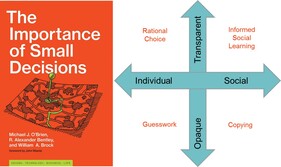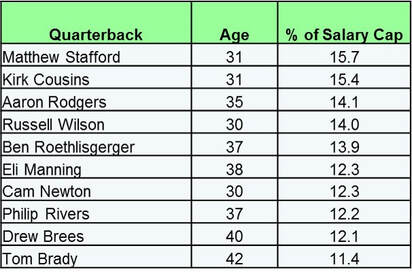
The discussion of Brady's contract arises in a later section in the same chapter. The authors are interested in Brady's decision to restructure his deal in 2015 so as to "free up $24 million so it could be used to buy other players". They use this decision to illustrate one quadrant of their decision making framework. The authors locate Brady and the Patriots in the top left hand corner of their map. [This is also the place where they locate economic (wo)man.] Tom Brady is used to add weight to the argument that they seem to want people to live in the Northwest.
I was reminded of this when watching Sky's coverage of Week 3 of the current NFL season. The presenter and guests were discussing the percentage of the salary cap taken up by the quarterback. They divided the quarterbacks into two groups - older and younger quarterbacks.
When discussing the younger quarterbacks, the year of the draft and the pick was listed. The key seemed to be the pick number. Lower pick numbers took up larger shares of the salary cap. Baker Mayfield (1) was at 4.0% of the salary cap. Patrick Mahomes (10) gets 2.4% of the salary cap. Dak Prescott (135) gets only 1.1%.
The older quarterbacks tended to have a larger share of their respective salary caps. Here we see some evidence of Brady's decision discussed above. Maybe Tom illustrates the usefulness of the decision making map. Maybe.

 RSS Feed
RSS Feed